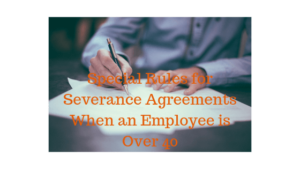As a labor and employment attorney and one who spends a significant amount of time representing unions, I often get questions from people regarding what can happen to them at work if they try to form a union with their coworkers.
The question is usually in the form of: “can my boss fire me if I try to form a union”? Or “am I allowed to form a union at my job”? The fear of retribution from employers and management is often at the top of these workers’ minds. After all, the employee probably already works for an employer that does not take great care of or provide appropriate respect to employees, which is why the employees are concerned about union organizing in the first place. Their fears of retribution then would not be unfounded.
Federal Law Allows Employees to Form Labor Unions
The National Labor Relations Act (“NLRA”) or Wagner Act, which was passed in 1935, permits the majority of employees working in the private sector to form labor unions. There are exclusions from the protections of the act, like agricultural employees, domestic workers and managers for example. There are also whole industries not covered by the NLRA because they are covered by other labor acts. Railroads and airlines are an example of this because workers are permitted to form unions in those industries under the Railway Labor Act. Despite these exceptions to the NLRA, the vast majority of employees are permitted by this law to form labor unions. In fact, NLRA rights are broader than merely forming unions but the breadth and depth of those protections is for a completely different article…or actually several posts.
Note that only employees as defined by the NLRA are permitted to form unions. Independent contractors are not permitted to from unions under the Act.
Section 7 of the NLRA states “Employees shall have the right to self-organization, to form, join, or assist labor organizations, to bargain collectively through representatives of their own choosing, and to engage in other concerted activities for the purpose of collective bargaining or other mutual aid or protection.” This is the basis of the right to form a labor union. It is that simple in black and white.
Ok, So Employees Have the Right to Form a Union, but What About Being Fired for Doing so?
The NLRA also has this covered. Section 8 of the Act defines and sets out numerous unfair labor practices. One of the unfair labor practices is under Section 8(a)(1) of the Act and that section states it is an unfair labor practice for an employer “to interfere with, restrain, or coerce employees in the exercise of the rights guaranteed in section 7.”
There you have it, it is an unfair labor practice for an employer to terminate an employee for attempting to form a labor union. Terminating an employee for doing so is certainly interfering with, restraining or coercing employees in the exercise of their right to form a union, which is granted by Section 7 of the NLRA.
Ok, Firing An Employee Would be Unlawful, but People Break the Law All the Time…
Yes, people and companies do break the law all the time. Laws do not prevent people from committing acts in violation of the law itself. Usually, laws will provide remedies for people harmed by a violation of that law.
I tell you this because the law does not prevent an employer from terminating an employee for an unlawful reason. They could certainly fire the employee and then the employee would immediately be without income. Buzzkill, right? I know, but wait…
If an Employee is Fired for Trying to Form a Union, What Remedies Are There?
The remedies in the NLRA are not great compared with the remedies available under other employment and labor laws. However, there are remedies that should at least make a wrongfully terminated employee no worse off than had they not been terminated in the first place. The NLRB’s remedial authority flows from Section 10(c) of the Act.
Section 10(c) of the Act provides for two main remedies for an employee who is terminated in violation of the Act. Those remedies are (1) reinstatement to employment and (2) backpay for the employee’s period of unemployment. Though, an employee could be out of work for a long time before final resolution of an unfair labor practice charge before the Board. There is a mechanism under Section 10(j) of the NLRA for the NLRB to seek injunctive relief, which could permit an employee to be reinstated while waiting on final resolution of his or her case. Injunctive relief is an extraordinary remedy and requires a high threshold showing by the Board. So, even though the injunctive relief is available, it is not often exercised by the NLRB under Section 10(j).
One other remedy under the Act is notice posting. When an employer is found to have violated the NLRA, the employer is required to post a notice in the workplace stating it violated the Act and stating it will not do so any longer. Note that there are no punitive remedies available to an employee terminated in violation of the NLRA. Also, the traditional American Rule on attorney’s fees applies, which means each side is required to pay their own attorney’s fees.
In summation, yes, employers do fire employees for union organizing, but if they do, they violate Section 8 of the National Labor Relations Act. The law provides a remedy for this termination, but the remedies are really nothing more to the employee than reinstatement and backpay. The benefits to union organizing are great. Study after study shows that union members earn more in wages, have better healthcare, earn more in retirement and have greater workplace safety protections. Employees can form labor unions and should know that they have the right to do so without retribution.


